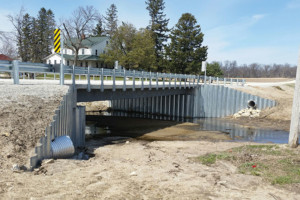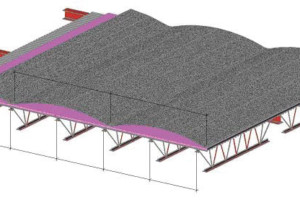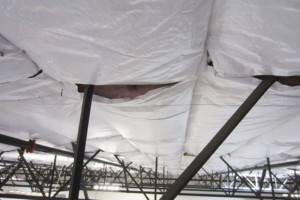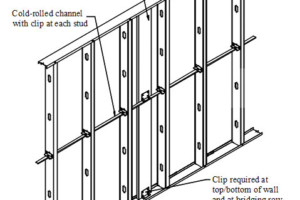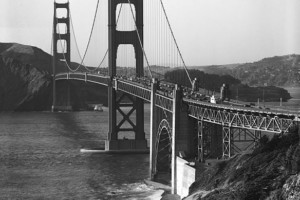The future of short span steel bridge design began in 2009 with a challenge from the Federal Highway Administration (FHWA). FHWA challenged the North American steel industry to develop a cost-effective short span steel bridge with modular components which could be placed into the mainstream and meet the needs of today’s bridge owners, including Accelerated Bridge Construction (ABC). The challenge was issued to help address the U.S. infrastructure crisis of structurally deficient and functionally obsolete bridges, nearly half of which fall in the short span category (defined as bridges under 140 feet). …
Review Category : Articles
Membrane roof systems installed on steel roof decks traditionally result in a uniform transfer of wind (uplift) loads from the roof membrane to the steel roof deck and underlying supporting structure (e.g., steel joists). For example, in a built-up membrane roof system – which has been used commonly in the U.S. roofing industry for more than 125 years – the built-up membrane is continuously adhered to rigid board insulation. …
There is a disturbance in the Force. Can you feel it?” This quote can be applied to many different subjects in the universe, including what is going on in the construction industry here on earth. We do not have floating cars and diplomatic robots fluent in six million languages yet, but the construction industry is being transformed like never before. While there are sure to be growing pains along the way, it is also an exciting time to be in the industry. …
Condensation on interior surfaces can cause corrosion and wood decay if not addressed promptly. Repair and restoration of decayed structural elements are important. Equally important is determining the source of the problem, so it does not reoccur. Condensation is moisture vapor collecting on a cold surface – in this case, wood roof sheathing at the interior of the building. …
STRUCTURE’s February 2017 Engineer’s Notebook discussed the design requirements and methods to laterally brace (bridge) axially loaded cold-formed steel stud walls. This article provides the design requirements and methods to anchor, or complete the load path, for the lateral bracing (bridging) of axially loaded cold-formed steel stud walls. …
The Golden Gate Bridge, designed by Joseph B. Strauss and Charles A. Ellis, is one of the best-known engineering structures. It was the longest suspension bridge in the world for many years, with a span of 4,200 feet. Proposals for a bridge across the Golden Gate started in 1869 and were reinvigorated almost 50 years later. In 1916, James Wilkins, a newspaperman but formerly a civil engineer, began his campaign to bridge the Gate. …
What, exactly, is it?
I was part of a conversation recently among a group of practitioners where someone wondered about what was studied in an Architectural Engineering (ArchE) program. Earning a Bachelor’s Degree in Architectural Engineering myself, this curiosity surprised me. After all, I had presumed, in the several decades since graduating, Architectural Engineering had surely become ubiquitous in the profession in which most of us practice. …
The Logic of Ingenuity
The process of (abductively) creating a diagrammatic representation of a problem and its proposed solution, and then (deductively) working out the necessary consequences, such that this serves as an adequate substitute for (inductively) evaluating the actual situation. …
The article Understanding Indemnification Clauses published in the January 2017 issue of STRUCTURE provided an overview of indemnification clauses. A second article, Understanding the Difference Between Indemnification and Insurance, published in the February 2017 issue of STRUCTURE took a closer look at indemnification clauses and compared indemnification with insurance. In both of those articles, the focus was on the indemnification obligations of the structural engineer. In this article, we will look at indemnification of the structural engineer. …
5 Ways to Secure Your Next Best Hire
Based on over 18 years of experience, it has become evident that hiring an engineer takes finesse, patience, commitment, and creativity – it is more of an art than a science. …

